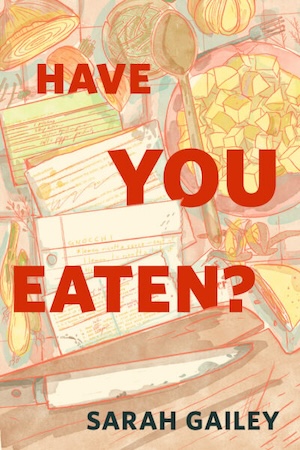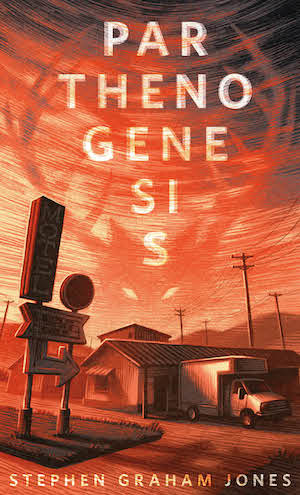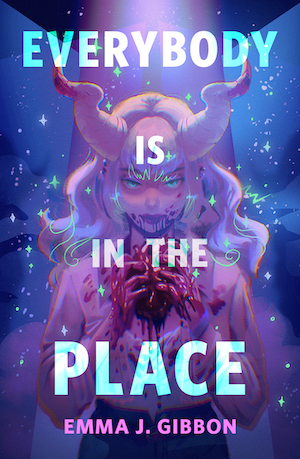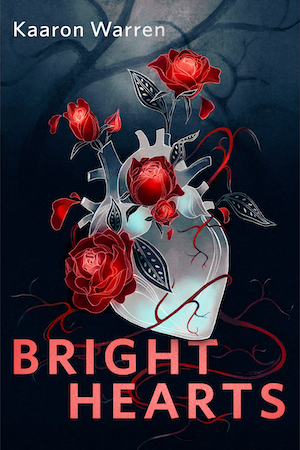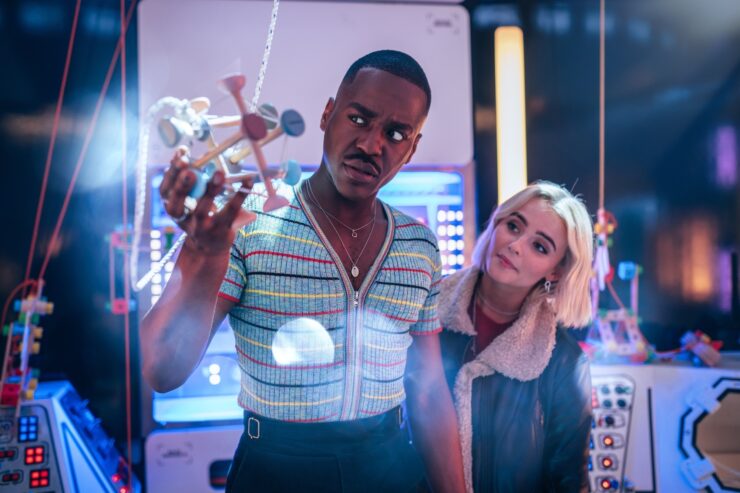We’ve got a two-episode premiere to get us started, which typically means one trip to the future and one to the past…
Recap—“Space Babies”
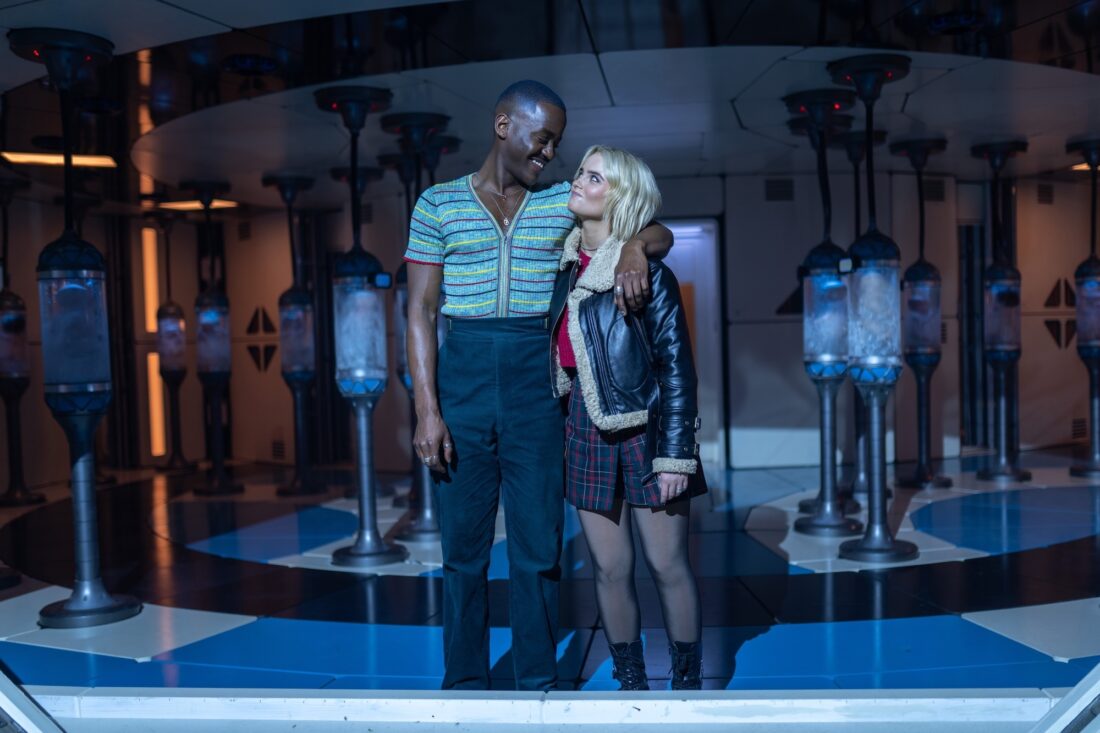
The Doctor gives the usual spiel to Ruby about the TARDIS and who he is and where he came from, acknowledging this time that he recently learned he was adopted. He brings Ruby back in time to see the dinosaurs; she asks if she’ll change all of the future by stepping on the butterfly, which he insists is nonsense. Then Ruby steps on a butterfly and turns into a completely different species. The Doctor breathes some of his regeneration energy back into the butterfly and things revert. The Doctor flips a special control on the TARDIS console to help with future butterfly effect instances, and they land in the future on a space station.
The station turns out to be an automated baby farm, carrying a monster in the lower levels, and run by space babies; the infants aren’t actually infant-aged but children trapped in baby bodies. There are no parents aboard, only a nanny AI to help take care of the children. Captain Poppy (who is a baby, of course) wants to know if they grew up wrong, since they’re not meant to be like this; they were supposed to grow like regular kids. The Doctor tells Captain Poppy (Sienna-Robyn Mavanga-Phipps) that no one grows up wrong, no matter how strange their lives may be—something he has had to internalize as well.
The Doctor notes that Ruby seems to be creating connections and similarities wherever they go, and when he asks her about it, he starts having a flashback to being at the church where she was left, and the memory changes… and then it begins to snow around them on the ship.
The Doctor and Ruby continue to investigate and meet Jocelyn (Golda Rosheuvel), the human woman who is actually the nanny, abandoned because she refused to leave the babies alone; she keeps herself hidden from the children because the ship doesn’t have infinite resources, and she doesn’t want the children to see her die when she runs out of air. She explains that when the planet that created said baby farm went into a recession, the government abandoned the farm, but it was against the law to destroy the children. The babies are effectively refugees, but they can’t make it to a nearby planet that might take them because nothing on the ship is working properly.
Ruby notices that everything on the ship feels like a fairytale: babies, nanny, bogeyman. The Doctor asks about the monster, and Jocelyn tells them that it appeared around the same time that the children did. The Doctor knows there’s something strange about the monster because he was afraid of it when he saw it, which is unusual for him. When they go to investigate, the babies interfere to prevent them from getting hurt, and the Doctor realizes that the damaged ship is running on stories to keep everything going—it created a bogeyman (from the kid’s literal bogeys) as part of the narrative.
Knowing that, the Doctor can’t let anyone kill the bogeyman—it’s the last and only of its kind, you know—and when Jocelyn almost sends the creature out the airlock, the Doctor saves it. He then figures out how to use the ship’s refuse to power the station so it can get to the nearby world that will accept the babies as refugees. The Doctor tells Ruby that there is one thing he can never do; take her to the church where she was left as an infant to find out who her mother is. He gives her a TARDIS key of her own.
Recap—“The Devil’s Chord”
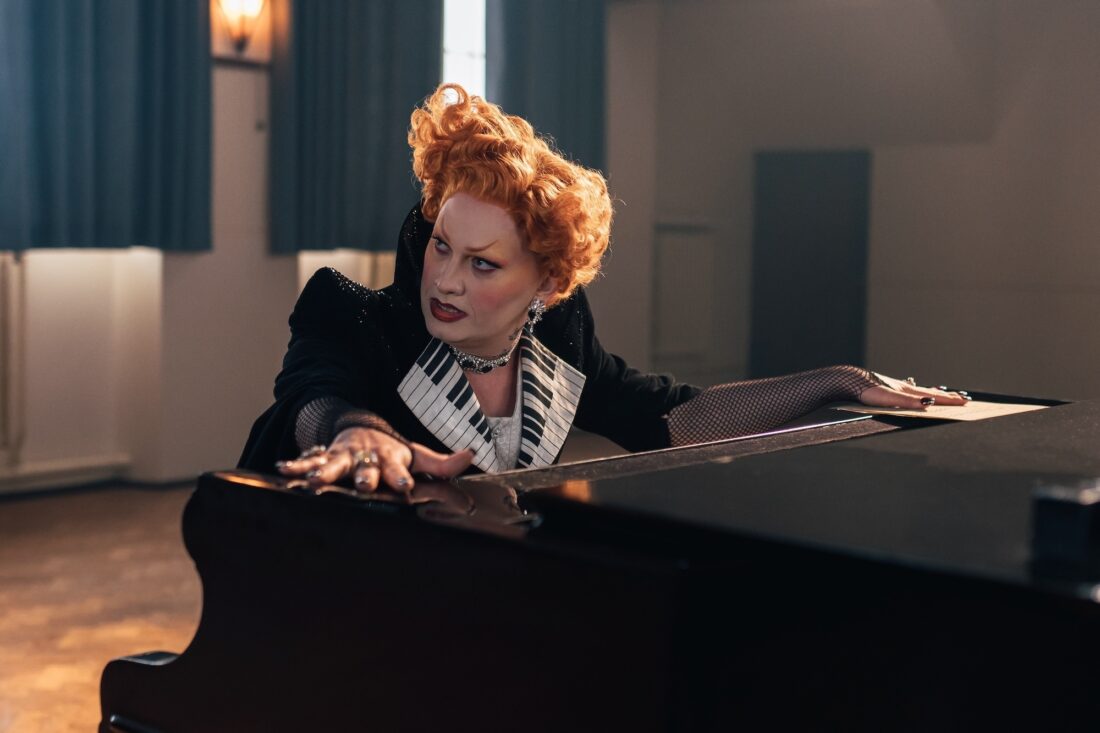
In the 1920s, composer Timothy Drake (Jeremy Limb) is teaching a little boy (Kit Rakusen) piano, and remembers a strange chord from his own instruction as a child: The Devil’s Chord. In playing the chord, he releases Maestro (Jinkx Monsoon), who sucks all the music from the man that he will ever create. From there, they proceed with their plan…
Ruby tells the Doctor that she wants to see the Beatles record their first album, which he is delighted to provide. The two of them get dressed in the wardrobe room for the occasion and walk to the soon-to-be-known-as Abbey Road Studios, getting themselves into the booth as the Beatles begin to play… but the music is dull and wrong in every sense. Visits to other recording booths unearth more of the same, and the Doctor and Ruby begin asking around, interviewing John Lennon (Chris Mason) and Paul McCartney (George Caple) about when music changed. It turns out that things have been going wrong since the ‘20s, and now music is essentially gone from the world.
The Doctor has Ruby play piano on the roof of the building, and she plays a piece she wrote for a friend after a breakup. Everyone begins to listen, but that calls out Maestro. The duo run, and the Doctor uses the sonic screwdriver to block sound for long enough to get away. It’s a one-time trick, however, and won’t work again.
Ruby insists that this can’t have effected the future because she knows music from her own life. The Doctor takes her back to her own time to find a devastated world, the future rewritten. The Maestro shows up there too, and insists that all music belongs to them. The Doctor is determined to challenge them, so they remind them of the rules of fair play that the Toymaker set in place, and the Maestro admits that they were released by a genius who found the right chord… so another right chord could banish them. The Doctor hightails back to the ‘60s, and the Doctor and Ruby head back to the recording studio to find the right chord.
The Maestro takes Ruby, and finds that there’s a hidden song in her, music that was playing the night she was born. This confuses Maestro, who insists “he” couldn’t have been there. The Doctor uses the Mrs. Mills piano to find the banishment chord, and he and Maestro have a music battle, but he blows it on the final note. As he and Ruby are about to be consumed by Maestro, John and Paul find the piano and play together, hitting the right notes to send Maestro away.
The Doctor and Ruby are relieved that things turned out well, but the Doctor knows that the Toymaker gave a warning about his legions: Others are coming. But the Doctor tells Ruby that with him, there’s always a twist at the end. This leads to a full-out swinging ‘60s song-and-dance number to the same tune.
Commentary
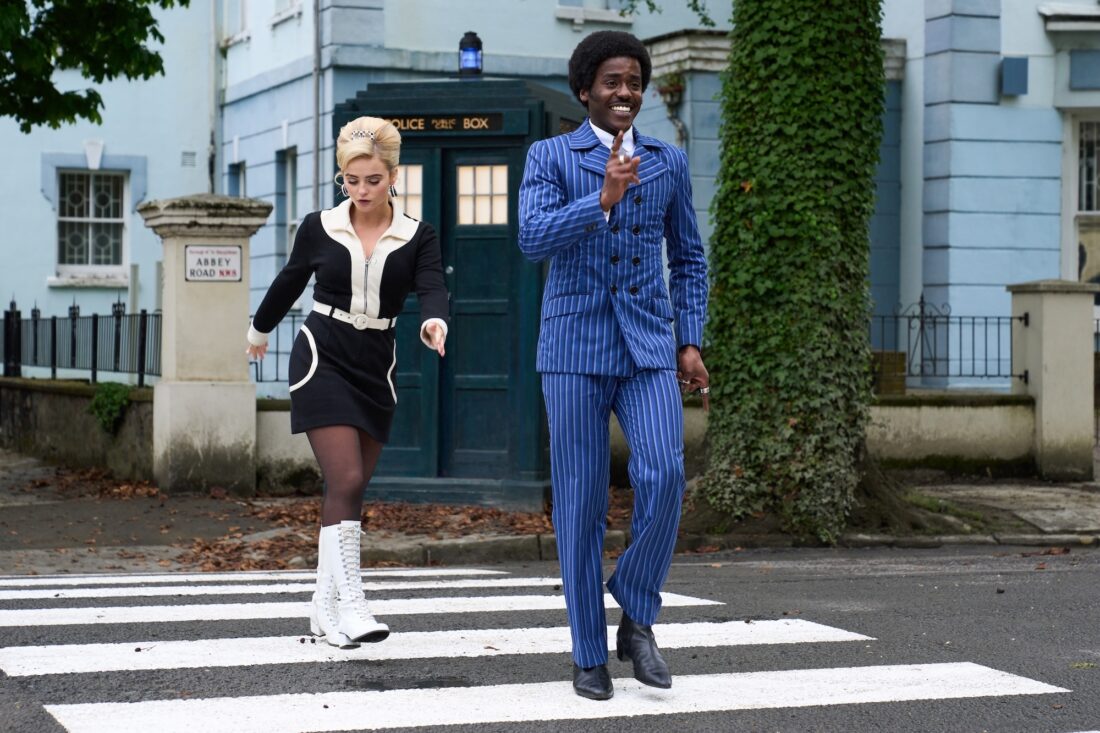
Someone’s back on his “Last of the Time Lords” bullshit—it’s this guy right here! I love it, and I won’t apologize for that.
Is it too dramatic? Of course it is. But I never appreciated the retcon that brought the Time Lords back for a multitude of reasons—among them being the Time Lords are awful and also don’t retcon major plot points when your only reason is “I don’t believe the Doctor would allow this to happen,” which was, in fact, the reason Steven Moffat gave for upending that choice in the 50th Anniversary Special—so I was all too happy to let the Master redo the thing that Doctor was forced to do.
These two episodes are a great illustration of Russell T. Davies’s desire to bring more fantasy into Doctor Who on this shuffle. That was part of the plan in using the Toymaker for the final 60th Anniversary Special; the reset the Toymaker provided was meant to adjust the universe settings a bit, which is why we’re getting so much story and silliness and performance out of the antagonists.
Having said that, “Space Babies” is doing a lot of the same things that “The Church On Ruby Road” did, which is odd for a first season episode. (Even if the script does hang a lantern on it at the beginning… Ruby “connecting” things doesn’t make sense of a whole plot being that similar.) We’ve got infants in peril again, and a monster out of storybooks, and the hilarious thing about Who where sometimes the Doctor is okay with committing murder and sometimes he decides it’s the most wrong thing a person can do and would never. I appreciate that the Doctor chooses to connect with the bogeyman this time around as the Goblin King’s death was barely considered and pretty brutal. I appreciate even more his moment connecting with Poppy and trying to feel good about who he is all over again, with even more baggage than the last time he was the Last of the Time Lords.
There are some excellent bits of commentary in the first episode around anti-abortion movements being unwilling to take care of children once they’re born, and refugee crises demanding that displaced populations find their way to help rather than the other way around. But the entire conceit of the episode is so intensely goofy, my worry is that those comments get lost between all the poop jokes and weird baby CGI. I do love the nanny filter, though. And I do love that Doctor Who is bombastically silly as a rule—there’s just a time and a place! You’ve gotta pick your moments for the heavy stuff.
A lot is going into the mystery around Ruby’s mother, which has me nervous. I love a gentle season arc, but if you harp too much, it gets harder and harder for the answer of the mystery to live up to the build. Hopefully we’ll ease off on it now that it’s been reestablished? Give Ruby a chance to shine on her own terms, because she’s a lot of fun, but we still don’t know her very well yet.
The best thing about “The Devil’s Chord” is Jinkx Monsoon, without a doubt. In fact, the choice to make the episode half-vaudeville and half-drag show is the strongest thing about it. Monsoon is clearly having a ball, the costume is on point, the music is fabulous. And the awfulness of the songs once Maestro has taken the music away is perfect. And the mystery they provide, the sense that they know so much that they’re not saying… it’s all such good stuff.
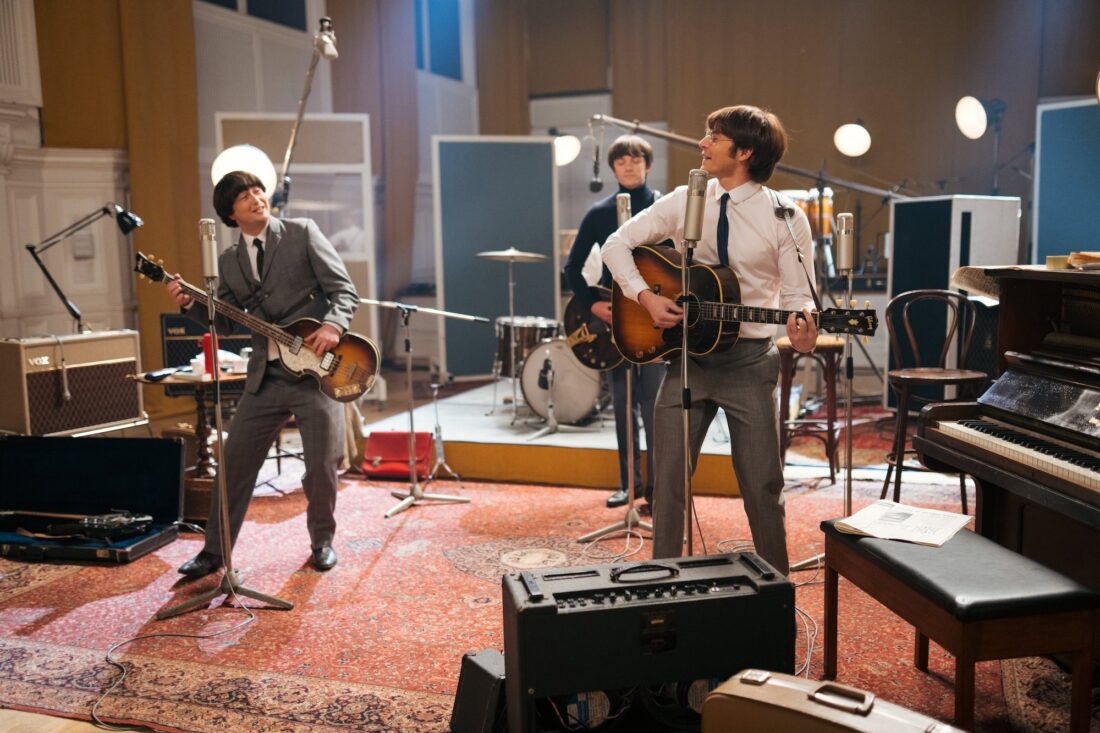
That said, I’m not a fan of how The Beatles are used in the episode. It’s too obvious, the actors are not at all suited to the roles, and they’re barely relevant to the story… which in turn feels like a Hand-of-Disney move. Disney+ is responsible for giving Who a shiny new budget, after all, and the streamer is deeply invested in churning out as much Beatlemania as it can half a century on. (The re-release of the Let It Be documentary literally premiered two days before this episode dropped—you can’t tell me that wasn’t a “synergy” move.)
It would have been more interesting for Ruby—who is herself a musician—to have a deeper well of knowledge on music and want to see a more surprising artist or band. But more importantly, if there wasn’t a pressing desire to use The Beatles as the historical figures of the episode, they should have been left out. For a show that usually has so much fun with historical figures, this was wildly lackluster. Also, I’m surprised that they never made a joke about the Second Doctor; his hair was supposed to be a nod to the Beatles’ popularity at the time, and it would’ve been hilarious for the Doctor to mention it.
As for the end number, I’m of two minds entirely. To a certain extent, I’m loving the choice to go full ‘60s beach party movie and let everyone boogie to their heart’s content. Conversely? Big “Bilbo Baggins” vibes on this one. The Leonard Nimoy classic, that is. I think giving it just a little more setup would have ameliorated the cheesiness. Come on, just a little throwaway line about residue from the resurgence of music making everyone ready to go Full Musical. Give us the tiniest why, we’re already here with you.
Time and Space and Sundry
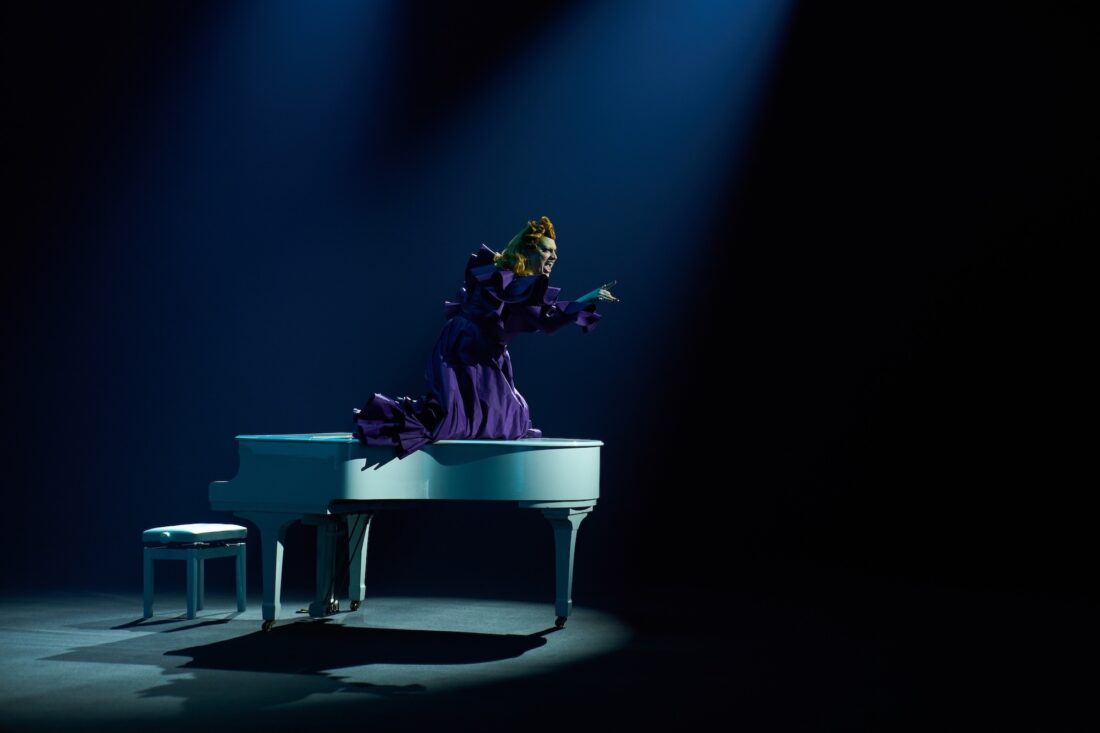
- Okay, but it is great for the show to acknowledge that maybe there is a switch to flip on the TARDIS that makes it okay for the Doctor and pals to be wandering around in time, not mucking things up with Butterfly Effects. It’s probably not called the “Butterfly Compensation Switch,” though. Not in Gallifreyan, at least; the real name is probably very boring.
- The Doctor calling Poppy “Popsicle” and “Pops” is my favorite thing in the whole world.
- Thinking a lot about how it’s a right of passage to have something either disgusting or horrific happen to you for your first adventure in the TARDIS: Rose had to see her planet die, Amy got covered in space whale vomit, Clara found a child about to be sacrificed to a parasitic god, Martha had to fight reality-bending witches and got drugged then kidnapped, Bill discovered that food she ate was fertilized with dead bodies of murdered humans, Donna went to friggin’ Pompeii and had to convince the Doctor not to let everyone die…. Ruby doesn’t realize that being covered in snot is on the milder end of that spectrum. (Though the post-music apocalypse is worse.)
- Not the Doctor telling Ruby that he can’t bring her back in time to see her mother because he’s definitely thinking about how well that went with Rose and her dad.
- Sorry, but I’m having a very hard time believing that the Maestro wasn’t just another name for the Master—the words literally mean the same thing. And it would be extremely on brand for the Master to try out another gender before the Doctor gets the chance yet again. Having said that, I’m curious as to whether Maestro wasn’t the one who picked up the gold tooth that the Master resides in. (They did play his intro on the piano…) Also, does the Toymaker have a bunch of kids or just the one?
- When the Doctor said “Please don’t hate me” to the TARDIS, I maybe teared up a little.
- The Doctor tells Ruby when they’re back in the ‘60s that he’s currently living there with his granddaughter, Susan, as 1963 was when the show began. This is the first time that the Doctor has suggested that he’s unsure what happened to Susan due to the ripple effects of the Time War and possibly the Flux. He doesn’t know if he could see her, because he’s not sure that she hasn’t been wiped away. Which is extremely tragic, but certainly helps explain that niggling lack of family visits. It’s also the first time that the Doctor has attempted to explain exactly how he has a granddaughter… and he doesn’t seem entirely sure, in fact. Timey wimey, and all that. This explanation makes more sense than the Doctor simply having a partner, and them having a kid who had another kid, at any rate.
[Update: Comments were closed over the weekend, but are now open.]
See you next week!


